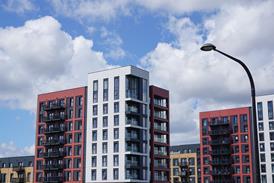John Downie, UK sales manager at CBC (Europe) Ltd, offers the ten most useful tips in his guide to ANPR installation…
As a security systems installer, have you ever been asked to provide an ANPR (Automatic Number Plate Recognition System) solution? When customers ask for an ANPR system, what do they really mean? Do they really know what problems they are trying to solve? Or what they are trying to achieve?
With any ANPR system, it is paramount that we understand our customers' requirements so that we can provide the correct solution. We get it wrong at our peril. The mis-selling of any system will lead to problems at a later stage. When issues arise, all too often the equipment is the first thing to get the blame.
So to help you out at the various stages of providing a solution (surveying, specifying, selling, installation, handover and commissioning) we have compiled what we call the '10 ANPR Commandments' as a guide.
The 10 ANPR commandments
The most important consideration when designing any ANPR system is to ensure the vehicle images are up to standard. Get this right and almost all ANPR recognition software will return success rates of over 95 per cent. Get it wrong and you could be faced with some expensive modifications.
With that in mind, here are our top 10 recommendations for a successful ANPR system.
1. Location, location, location
It's vital to choose a suitable location to capture vehicle plates and, when there is little choice, to be aware of a particular location's limitations.
As you will be zoomed-in close on the vehicles, try to pick a spot where the vehicles cannot deviate more than half a car's width from the central path. If this cannot be avoided, consider reducing the road width (using permanent or temporary kerbing), or consider using additional cameras. The easy fix of using a wider angle lens is not an option!
Also, pick a place where a camera may view the vehicles head on, or be as close to this ideal as possible. This will offer many benefits, including improved accuracy and longer camera exposure times. Longer exposure times are important, as we will see later.
Finally, you need to consider tailgating, which will prevent some vehicles from being captured. This is usually a problem when the location suffers from congestion and the vehicles bunch up. The usual solution is to install a speed hump, although a more expensive solution is to use an automatic barrier letting one vehicle through at a time.
2. Choose the right camera for the location
If a list of number plates is all you need, the infrared ANPR-designed camera would seem to be the only choice. This camera is a combined monochrome purpose-made camera with lens filtering and infrared illuminator in a single assembly. For example, the Ganz Roadstar ANPR range uses IR LED arrays in a 10 metre and 20 metre range option.
The use of LED arrays is preferred over the IR Bulb type, as the IR bulb will require more regular replacement. The main advantage of the IR solution is that it works well on unlit roads at night and in very difficult lighting conditions, but very little other information about the vehicle is captured.
Many organisations, however, want more from a vehicle recognition system, such as a good colour image of the vehicle and perhaps images of the occupants. A good way to achieve this is by using more than one camera per traffic lane, with an infrared ANPR camera to recognise the plate and associated colour surveillance cameras (overview camera) to capture the vehicle or occupants. Technically, this is the best approach providing that the cost is not prohibitive.
3. Site the camera well
The camera needs to be installed level and should view the vehicle from dead ahead if possible. If there is no suitable mounting point, consider a
column with an extended arm to bring the camera out above the traffic, but bear in mind the clearance required for the tallest vehicles using the roadway.
Do not try to capture the vehicle from behind as accuracy will be reduced (amongst other things car plates are often obscured by bicycle racks or tow bars, whilst lorry trailer plates are usually fixed by elastic cord over the characters).
The camera should not be too high in relation to the recognition point; try to keep the maximum vertical angle below 30 degrees. However, if tailgating is also problem that cannot be solved by other means, you may need to compromise between these two requirements, since a greater angle will improve tailgating problems. Be aware that increasing the vertical viewing angle also increases the need for shorter exposure times.
Finally, if possible, aim for the camera to view south. This will reduce problems of plate overexposure which occurs when the sun is directly behind the camera.
4. Zoom in close
Most initial problems with ANPR systems are due to the camera not having a close enough view of the vehicle. As a general rule, the vehicle should be as wide as the screen width when displayed on a monitor, with a car's wing mirrors touching each edge of the image.
As a general rule, the vehicle should be as wide as the screen width when displayed on a monitor, with a car's wing mirrors touching each edge of the image…
Whilst some ANPR systems can work with smaller plates than this, you can be sure of success if you stick by this rule.
5. Avoid blurred images
A sharp image of the licence plate is obviously essential if you wish to achieve the highest success rate. Firstly, the camera must be focused on the chosen recognition point. Infrared cameras are usually pre-focused for specific distances and you should stick rigidly to this requirement. If using a colour camera for the overview this will need to be set up using neutral density filters and checked under night conditions as with any external colour camera installation.
Colour overview cameras will also require their exposure time to be set. The camera should be viewing the traffic head-on and not positioned too high. As the camera is moved further from the ideal position the exposure time necessary to achieve sharp images increases.
The optimum setting will need to be established since traffic speed is also a factor. As a guide, for a camera positioned at the side of the road at a site entrance, a low to medium exposure time is common. On fast roads it is not unusual to need a high exposure time, and this is the reason that colour cameras are unsuitable for many night applications – they are not sensitive enough unless a high level of visible support lighting is available.
6. Know your traffic speed
It is important that the fastest traffic speed for your chosen location is known, bearing in mind that this may change at different times of the day. As vehicle speed increases so does the processing power required to accurately recognize the plate.
Very fast traffic may require a PC for each traffic lane, whilst a site with barriers may be able to use a single PC for up to four lanes. Each manufacturer has different requirements and will specify the PC configuration required – just ensure you provide them with worst case traffic speeds.
7. Driver images are not always possible
If you wish to obtain driver images and your location is a site entrance, you can successfully obtain an image of each driver by employing two cameras. One camera views the plate whilst the second views the driver through the side window. Because of the reflective glass it is usually necessary for the driver to open his window and look towards the camera; this can be achieved by requiring drivers to press a button, perhaps to raise a barrier.
Apart from the above scenario, attempts to capture driver images may produce variable results depending on lighting conditions. For vehicles which do not stop, a centrally located colour camera complete with polarizing filter will often give good results for much of the time. A separate ANPR camera will be required unless using ANPR systems which capture a sequence of frames rather than a single overview image. Driver images should be viewed as a bonus with this approach as they are not guaranteed under all conditions, but the system cost can be significantly lower.
8. Software – start with the basics
The first thing to check before looking in detail at each offering is that the software you intend to use will cope with your maximum traffic speed. Some ANPR software is designed only for low-speed use and is intended for car park entry systems or similar, whilst other packages process video in real time and are suitable for vehicles travelling at 100mph plus.
Secondly, if you need a server PC capturing records from multiple capture PCs in order to provide unified data, either now or in the future, check that the software can be networked. It is important to be sure whether the system could possibly expand to multiple workstations or multiple sites later on – if it might, it makes much more sense to choose a system which has a network option now and avoid all sorts of problems with re-configuring the system and retraining staff. Your customer will thank you for it in the long run.
Finally, recognition accuracy is the single most contentious issue with new systems. Try and ensure that the accuracy stated by the manufacturer is genuine; ask how it was measured and whether it has been verified. Also try and establish if there is any reason why your system will not reach the stated accuracy figures.
9. Keep your data secure
The personal data you capture needs to be stored securely and only for a limited period, in order to comply with the Data Protection Act.
Ensure the ANPR software you choose uses file encryption to prevent unauthorized access to the personal data when stored on a PC (or that some other reliable means of securing the data is provided).
Unless you are prepared to regularly check and manually delete records, also ensure that timed automatic deletion is included too, so that recognition records will not be stored beyond your maximum period.
If you intend to use recognition images as evidence, watermarking is an important feature that verifies a digital image has not been tampered with since it was first captured.
Finally, a secure method to enable operators to log on to the system is essential for protecting access to the records from unauthorized users. A detailed audit trail is also a major benefit as it enables a retrospective check on who did what and when.
10. Specify the features you need at the start
If you've taken the first nine rules on board, all that remains is to ensure that any other required features are provided by your choice of ANPR software. Make sure these are available now and avoid vague promises that will be available in the future; if necessary, get a written guarantee of the date your required feature will be available. The features you may be looking for include square, inverse, borderless or foreign plate capture; barrier or traffic light control; hot list or full vehicle and driver database; graphical reporting or tabular data analysis; and printing, export facilities or data interfaces.
Source
Security Installer
Postscript
CBC, as the manufacturer of Computar and Ganz products, has a range of off-the-shelf ANPR solutions products in its Roadstar brand. These include ANPR pre-build camera kits, capture hardware and software applications for various customer requirements. In addition it can design bespoke solutions as required. For more information on the products or please contact CBC (Europe) Ltd; email: info@cbcuk.com, Web: www.cbceurope.com.




















No comments yet